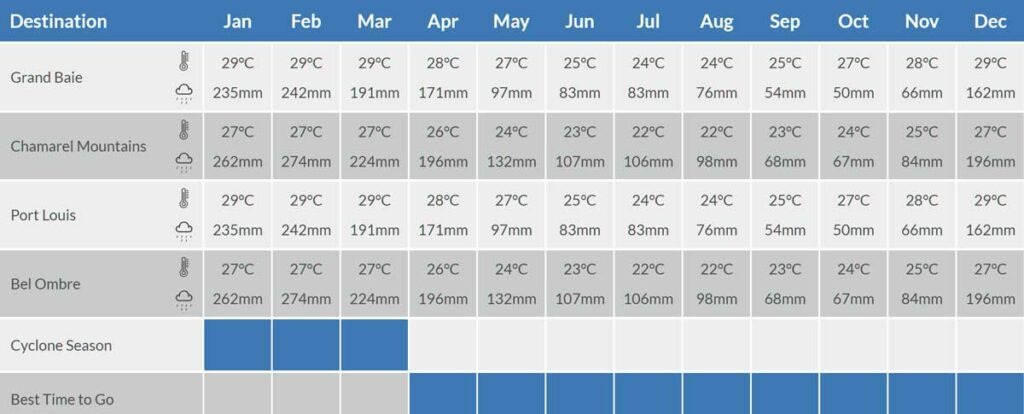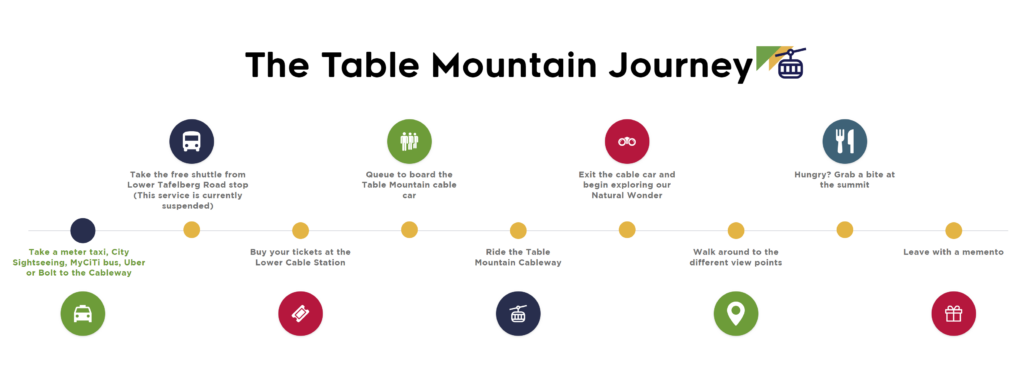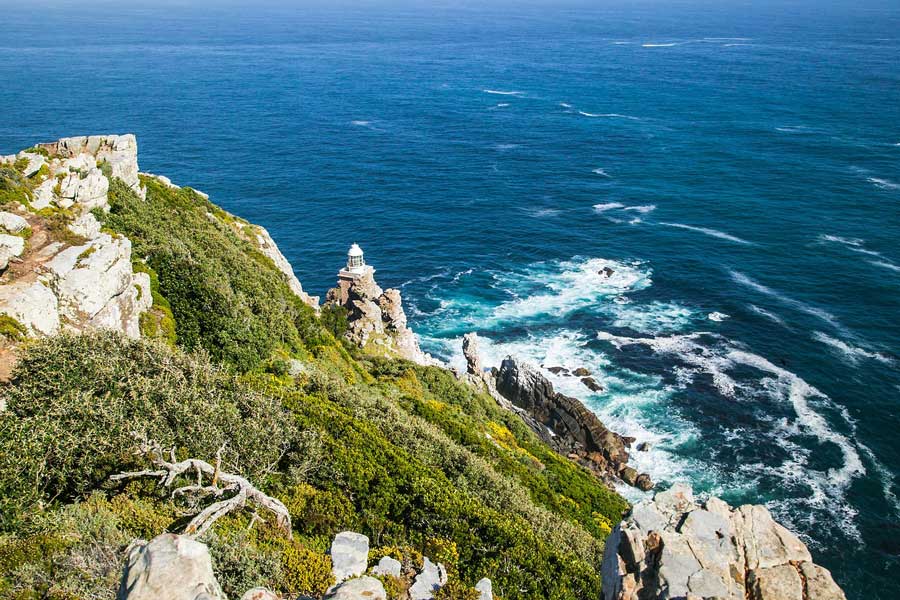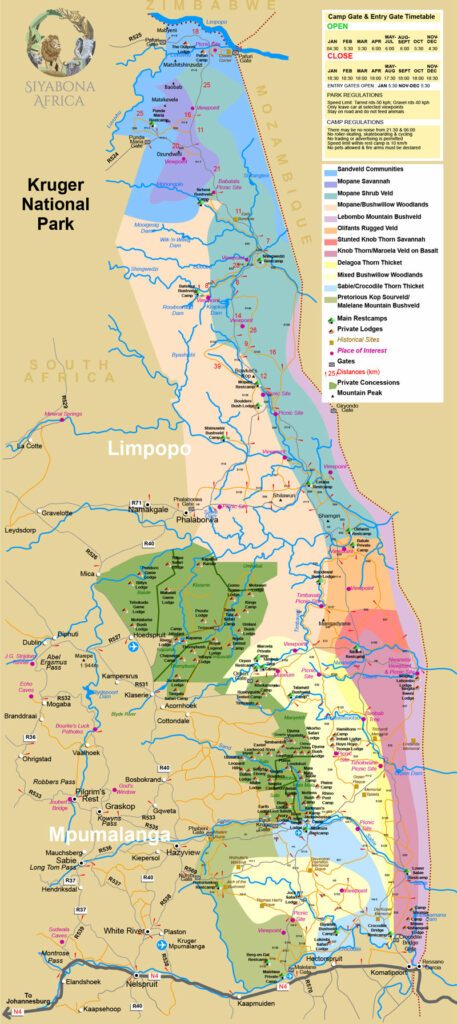
Determining the optimum time to visit Mauritius, a paradise island located in the Indian Ocean, requires an understanding of its unique climate and seasonal variations. This tropical destination experiences different weather patterns that significantly impact the tourist experience.
Notably, it has two distinct seasons: a warm humid summer and a relatively cool dry winter which are influenced by monsoon winds and occasionally disrupted by cyclones. Balancing these climatic conditions with factors such as peak tourist influx and off-peak benefits is crucial for planning a trip that aligns with one’s preferences.
Whether it’s indulging in outdoor activities or experiencing vibrant marine life, timing is key. This article provides an in-depth analysis of when to visit Mauritius based on various factors including weather patterns, tourist density, natural attractions, and personal interests.
Armed with this information, potential tourists can make informed decisions about when to schedule their dream vacation on this idyllic island.
TIP! Get cheap flights to Mauritius
Understanding the Climate of Mauritius
Mauritius, an island nation in the Indian Ocean, boasts a tropical climate where warm weather and ample sunshine are prevalent throughout the year, setting the stage for an ideal vacation destination.
The best time to visit Mauritius is largely dependent on personal preferences regarding temperature and rainfall. Generally though, it is agreed upon that the best time of year to visit Mauritius is between May and December when temperatures are moderate, skies clear and humidity levels relatively low. For those seeking sun-soaked holidays near crystal-clear waters, this period offers optimum conditions.
Consequently, Mauritius best time to visit coincides with its winter season due to mild weather conditions favorable for outdoor activities. Therefore, understanding when is the best time to visit Mauritius can significantly enhance one’s holiday experience.

The Impact of Monsoon Season
Understanding the implications of the monsoon season is crucial when planning a trip to this tropical paradise, as it significantly affects weather patterns and therefore, potential activities.
Mauritius experiences two types of monsoons – the Southeast Trade Winds (May to September) and Northwest Monsoons (November to April). The former brings cooler temperatures, whilst the latter induces warmer climates with more rainfall.
During these seasons, outdoor activities can be impacted due to unexpected rain showers or windy conditions. However, these conditions also provide an opportunity to experience indoor attractions such as museums, galleries and shopping centers.
Therefore, understanding monsoon patterns will enable visitors not only in choosing the timing of their visit but also in tailoring their itinerary according to prevailing weather conditions.
Peak Tourist Seasons
Peak tourist seasons in this tropical paradise align closely with the island’s climatic patterns, drawing crowds particularly during the dry and sunny months. The influx of visitors is noted to increase considerably from October to April, when the weather is warmest and rainfall less frequent.
Main Tourist Seasons:
- October – December: Marked by consistent balmy temperatures, these months are ideal for beach activities and water sports.
- January – April: While these months may experience occasional showers, they offer optimum conditions for underwater exploration like snorkelling and diving.
- May – September: Although visitor numbers dwindle slightly due to cooler weather, this period provides a unique opportunity to experience cultural events such as the Mauritius Independence Day celebrations.
These peak seasons reflect the dynamic appeal of Mauritius’ versatile climate that draws various groups seeking diverse holiday experiences.
Off-Peak Travel Advantages
Venturing to this tropical haven during the off-peak season presents a plethora of advantages, ranging from reduced tourist congestion to discounted accommodation rates. This period, which usually falls between May and September, is not only characterized by temperate weather conditions but also offers potential visitors an opportunity for more intimate interaction with the local culture.
| Advantages | Description |
|---|---|
| Less Crowded | Fewer tourists result in less crowded beaches and attractions. |
| Cheaper Rates | Accommodation and flight prices tend to be significantly lower. |
| Authentic Experience | Interaction with locals becomes easier, offering a deeper understanding of Mauritian culture. |
| More Availability | Greater choice of hotel rooms or excursions are often available due to fewer bookings. |
| Mild Weather | The temperatures are cooler, making outdoor activities more pleasant and manageable. |
In conclusion, off-peak travel provides several distinct benefits that can potentially enhance the overall experience while reducing expenditure.

Outdoor Activities and Their Ideal Seasons
Seasonal variations significantly influence the range and enjoyment of outdoor activities in any given destination. The climate of Mauritius, a tropical paradise in the Indian Ocean, is no exception. The island experiences distinct seasons providing ideal conditions for various outdoor pursuits.
Between May and October, when humidity is relatively low and temperatures average around 24 degrees Celsius, hiking and exploring the diverse landscapes become more comfortable for tourists.
On the other hand, optimal conditions for water sports such as surfing and diving occur from November to April during warmer months with calm sea conditions.
Thus, identifying suitable seasons for preferred activities can enhance one’s travel experience in Mauritius considerably. Consequently, planning a visit based on seasonal advantages could result in an optimised itinerary that satisfies individual preferences and promotes freedom-oriented travel experiences.
Cultural Events and Festivals
Transitioning from the exploration of outdoor activities, it is essential to delve into the vibrant cultural spectrum that Mauritius offers.
This island nation teems with a rich tapestry of traditions and customs, which are best experienced during its numerous festivals and cultural events.
The optimal time to witness these celebrations varies throughout the year. For instance, the Chinese Spring Festival in January or February paints the streets red with dragon dances and fireworks, symbolizing prosperity for the upcoming year.
Around October or November, Diwali – a Hindu festival of lights – illuminates every corner with diyas (lamps), signifying victory over darkness.
Furthermore, Sega music festivals provide an immersive experience into indigenous Mauritian culture all year round.
These festivities reveal not just Mauritius’ diversity but also its harmonious co-existence of cultures.
When to Experience the Marine Life
Mauritius’ vibrant marine life, teeming with unique underwater species, provides an unparalleled experience for snorkelers and divers alike throughout the year. The island’s crystal-clear waters are a hub of biodiversity that invites exploration at any time; however, there are specific periods when certain phenomena can be witnessed.
From October to December: This is the best time to witness turtles nesting on the beaches.
Between July and September: Humpback whales migrate near Mauritian shores during this period.
Year-round: Dolphins can be spotted throughout the year, particularly in Tamarin Bay.
January to March: These months offer visibility of up to 40 meters for diving due to clear waters.
November to April: It’s ideal for observing colourful reef fishes as they mate during these months.
These highlights showcase Mauritius as a must-visit destination for those seeking an enriching marine adventure.
Avoiding the Cyclone Season
While the allure of exploring Mauritius’ marine biodiversity is undeniably captivating, it remains imperative to note the island’s cyclone season that typically spans from January to March. During these months, unpredictable weather patterns characterised by high winds and heavy rainfall can disrupt travel plans and outdoor activities.
To evoke an emotional response towards understanding this seasonal pattern in Mauritius, consider the following table:
| Month | Weather Conditions | Travel Advisory |
|---|---|---|
| January | High winds & heavy rainfalls | Not recommended |
| February | Cyclonic conditions prevalent | Avoid travelling |
| March | Gradual decrease in cyclonic activity | Plan with caution |
Despite this period of inclement weather, the rest of the year offers an idyllic climate for visitors seeking freedom in their travel experiences.
Benefits of Visiting During Low Season
Transitioning from the discussion on the cyclone season, it is noteworthy to explore the advantages of visiting Mauritius during the low season.
- Reduced Costs: During these periods, air fares and accommodation rates are significantly lower due to decreased tourist activity. This reduction in expenses allows for more extensive exploration of this island nation.
- Lesser Crowds: The absence of throngs of visitors provides an opportunity for a tranquil and unhurried experience of local attractions.
- Genuine Cultural Experience: With fewer tourists around, interactions with locals become more authentic, offering insights into the country’s culture and lifestyle.
Therefore, despite potential weather fluctuations, choosing to visit during off-peak periods presents unique benefits that contribute to a fulfilling travel experience in Mauritius; one marked by budget-friendly options, serene environments, and rich cultural exchanges.
Planning Your Itinerary According to Your Interests
Crafting an itinerary that mirrors personal interests ensures a more satisfying and engaging journey through the diverse landscapes and attractions of this island nation. This is particularly true for Mauritius, where the variety of activities can cater to different tastes and hobbies.
For those with a proclivity towards adventure, the rugged terrains offer ample opportunities for hiking, while tranquil lagoons serve as perfect spots for snorkelling.
History enthusiasts may find delight in visiting museums showcasing colonial past or strolling through historical sites like Port Louis’ Aapravasi Ghat.
The Mauritian cuisine, a blend of Creole, Indian, Chinese and European influences provides gastronomic joy to food connoisseurs.
Incorporating these elements according to personal preferences into one’s travel plans would cultivate a more enriching Mauritian visitation experience.
Frequently Asked Questions
What kind of accommodation options are available in Mauritius?
Mauritius offers a diverse range of accommodation options to cater for varying preferences.
These include luxury resorts with top-notch amenities, self-catering villas for those desiring more autonomy, boutique hotels offering a unique and personalized experience, budget-friendly hostels for cost-conscious visitors, as well as bed-and-breakfast establishments providing homely comforts.
Each type of accommodation guarantees an enjoyable stay in this island paradise.
What are the visa requirements for visiting Mauritius?
Visa regulations for Mauritius vary depending on the visitor’s nationality. Some tourists are granted visa-free entry, while others must apply in advance. Generally, passport validity of at least six months beyond the date of entry is required. A return or onward ticket, proof of sufficient funds and confirmed accommodation details can also be necessary.
Always verify up-to-date visa requirements with local embassies or consulates prior to travel to avoid any complications upon arrival in Mauritius.
What are some of the local dishes to try in Mauritius?
Mauritian cuisine offers a harmonious blend of diverse flavors, reflecting the island’s multicultural heritage.
Among the must-try dishes are:
- Dholl Puri, a unique flatbread filled with ground yellow split peas
- Rougaille, a Creole dish made from tomatoes, garlic, onions and various spices
- Octopus Curry for seafood lovers
- Napolitaines, shortbread cookies traditionally served at special occasions, for those with a sweet tooth.
What languages are spoken in Mauritius?
In the culturally diverse island of Mauritius, several languages are prevalently spoken.
The official language is English, yet it is not widely used by locals in everyday life. Instead, Mauritian Creole, a French-based pidgin language, dominates daily communication.
Additionally, French and Bhojpuri are commonly understood and utilized.
Other Indian languages like Hindi, Tamil or Urdu, influenced by the country’s Indian-origin inhabitants can be heard as well.
Thus, language in Mauritius showcases its rich multicultural history.
What are some safety tips for tourists visiting Mauritius?
Tourists visiting Mauritius should prioritize safety.
First, avoid isolated areas, especially at night, and always be aware of personal belongings in crowded places to deter theft.
Second, use licensed taxis or reliable public transportation instead of hitchhiking.
Third, it is advisable to respect local customs and dress modestly to prevent causing offense.
Additionally, visitors are encouraged to consume food and beverages from reputable sources in order to avert potential health issues such as food poisoning.





